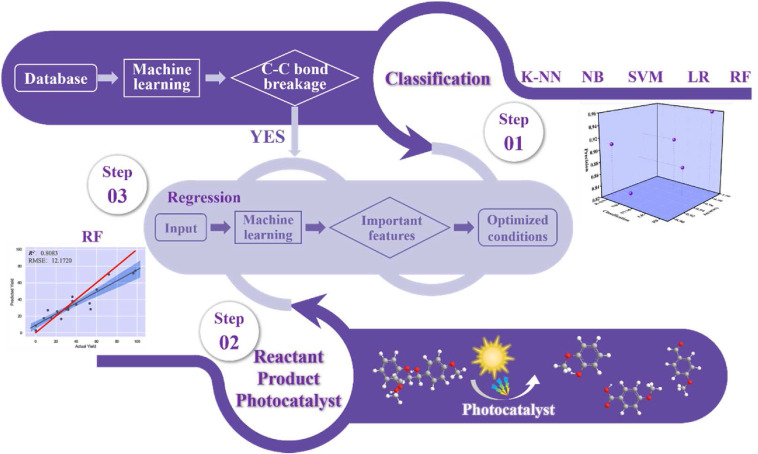
### Researchers Develop Extensive Catalogue of Radical Polarity, Providing Fresh Perspectives for Reaction Design
Radicals, which are molecules featuring unpaired electrons, have always intrigued chemists because of their varied reactivity and significance in organic synthesis. Nevertheless, comprehending their behavior, especially in intricate reactions, has frequently posed challenges. A research team spearheaded by **David Nagib** at Ohio State University has now made a significant leap in this field by assembling a catalogue of more than 500 radicals, categorized according to their electron-accepting (electrophilic) or electron-donating (nucleophilic) characteristics. The research, published in the *Journal of the American Chemical Society* (**JACS**), marks the first extensive quantification of radical polarity, an essential trait that greatly impacts how these intermediates function in chemical reactions.
### A Milestone in Radical Polarity Measurement
Radical polarity – the inclination of a radical to either attract or relinquish electrons – is vital in shaping its reactivity and selectivity during reactions. Yet, due to the naturally unstable and reactive character of radicals, accurately gauging and forecasting their polarity has proven to be challenging. In this innovative research, Nagib and his team applied a blend of **cutting-edge computational models** and **practical experimental assessments** to quantitatively analyze radical polarity.
The team performed various known radical-based reactions, including **hydrogen atom-transfer (HAT)** and **π-addition** reactions, utilizing a diverse array of radicals (over 50) in these experiments. By examining the performance of radicals across different reaction contexts, the researchers found that even minor variations in radical polarity could significantly influence reaction results, boosting reaction speed by as much as four times in certain scenarios. These discoveries were especially noteworthy in the realm of determining selectivity for radical addition strategies, which has historically been extraordinarily hard to predict.
### Effects on Reaction Selectivity
The most intriguing revelation from Nagib’s inquiry is how effectively radical polarity governs the selectivity of reactions. In particular, the researchers noted that altering the radical’s polarity could decisively influence which reaction pathway would be preferred, potentially paving the way for more efficient synthetic methods for complex molecules.
For instance:
– **Electrophilic radicals**, which seek electrons, proved to be particularly efficient in **anti-Markovnikov additions** to **electron-rich alkenes**, achieving remarkable selectivity in reactions aimed at these substrates. This selectivity facilitates reactions that introduce functional groups at less substituted carbon atoms on the alkene, offering crucial synthetic avenues in pharmaceutical and materials science fields.
– On the other hand, **nucleophilic radicals**, which give electrons, exhibited high selectivity in **Giese reactions**, a radical addition type directed at **electron-deficient alkenes**. Such reactions are vital for the establishment of carbon–carbon bonds, a fundamental aspect of organic synthesis.
These distinct pathways highlight the significance of radical polarity in crafting more selective and effective reactions, especially in synthetic organic chemistry, where precise control over site-specific modifications is essential.
### The Radical Polarity Database: An Essential Tool
The researchers assembled their findings into a **detailed database**, the first of its kind, categorizing over 500 radicals based on their electrophilic or nucleophilic traits. This **database**, accessible [here](https://pubs.acs.org/doi/suppl/10.1021/jacs.4c06774/suppl_file/ja4c06774_si_004.pdf), serves as a valuable resource for chemists seeking to inform their reaction design. Prior to this research, forecasting the behavior of a specific radical in a new reaction was largely conjectural. This fresh catalogue reformulates that approach, providing researchers with a more methodical way to choose appropriate radicals based on reaction conditions and intended results.
The dataset comprises not only measurements of radical polarity but also records the observed reactivity in various contexts, such as different substrates or solvents, making it an invaluable resource for both academic and industrial chemistry.
### Possible Limitations and Complexities in Practical Applications
Despite the advancements and progress represented by this research, it does have its limitations. The study’s predictive capabilities, while noteworthy, primarily pertain to simpler, single-step radical reactions. More **intricate, multi-step reactions** often introduce additional variables such as **sterics**, **solvent effects**, and **secondary interactions**, which can obscure the role of radical polarity.
For example, bulky substituents on a radical or proximity to reactive functional groups can disrupt anticipated reactivity, making predictions based solely on polarity less dependable. Moreover, solvent selections can significantly alter reaction kinetics or equilibria, further complicating the applied use of this database.
Nonetheless, even with these limitations, the study lays a crucial foundational understanding that could act as a springboard for more complex predictive models in the future, integrating supplementary variables such as sterics and solvent influences.
### Implications for Future Investigations and Uses
Nagib’s thorough study of radical polarity unveils a vast range of opportunities